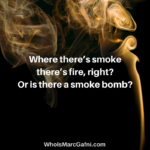In this clip, Dr. Marc Gafni talks about the use of the internet for crowdsourcing a witch hunt:
One of the core features of Internet abuse is the ability to crowdsource a witch hunt. What does it mean to crowdsource a witch hunt? So it has a bunch of features which are each important, and I’d like to point out in this short conversation and in the following one some of the salient features.
Marc Gafni: The Principle of Multiple Accusers
Number one, generally in a witch hunt there are multiple accusers. And, of course, today we don’t call it witch. On the Internet we often throw around psychological jargon. So, for example, I’ve had my former wife who I went through a legitimate and beautiful process of counseling with when we separated. We separated and divorced because I fell in love with another woman. She asked me to remarry her. I refused. She was in a rage. And she’s now used the Internet to hijack the victim narrative and diagnose me. So your former wife diagnoses you—but not in the therapy room—on the Web. She doesn’t call you a witch, she calls you a sociopath. It’s a new form of witch hunt. That’s completely possible on the Web, number one.
Number two, generally when a leader is attacked on the Web for, for example, sexual harassment, or a student on campus, for example, Emma Sulkowicz, the Mattress Girl, who accused the young man, there are often multiple accusers. The assumption is where there’s smoke there’s fire. If there are multiple accusers, it must be true. That is one of the great erroneous assumptions. Sometimes when there’s smoke there’s fire. At other times, when there’s smoke there’s a smoke bomb, or when there’s smoke there’s an ember, meaning there’s some kernel of something that’s going on, but that ember is fanned into a flame by malice, and the way the story is actually told is fundamentally untrue, distorted and filled with intentionally twisted facts.
 So what I’d like to talk about in the next clip is what does it mean when there’s smoke there’s fire is not necessarily true? What does it mean when there’s smoke there’s a smoke bomb? How do we actually understand why in dozens of cases the accusation is made not by one person, but by relatively large groups of people, five, 10, 12, 13, 14, 15? How does that happen? How does that phenomenon happen? Let’s take a look at it, if you’re up for it, in the next clip.
So what I’d like to talk about in the next clip is what does it mean when there’s smoke there’s fire is not necessarily true? What does it mean when there’s smoke there’s a smoke bomb? How do we actually understand why in dozens of cases the accusation is made not by one person, but by relatively large groups of people, five, 10, 12, 13, 14, 15? How does that happen? How does that phenomenon happen? Let’s take a look at it, if you’re up for it, in the next clip.